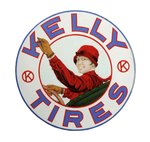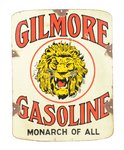As we learned before in the antiques and auction world one of the hottest collectibles that has been and always will be is automobilia. Everybody loves their car, and when you have the perfect car …
This item is available in full to subscribers.
We have recently launched a new and improved website. To continue reading, you will need to either log into your subscriber account, or purchase a new subscription.
If you are a current print subscriber, you can set up a free website account by clicking here.
Otherwise, click here to view your options for subscribing.
Please log in to continue |
|


As we learned before in the antiques and auction world one of the hottest collectibles that has been and always will be is automobilia. Everybody loves their car, and when you have the perfect car you want the perfect garage to keep it in. So you might wonder, what does someone decorate their garage with? “Petroliana”, which goes hand in hand with automobilia is the field of collectibles which relates to everything ofthe petroleum industry. You can’t drive your 1970 Corvette without gas, so why wouldn’t you want a sign of the iconic Sinclair brontosaurus or Mobil Pegasus.
Within the field of petroliana everything from store displays, gas pumps, oil cans, and even old complimentary road maps can be collectible. But of all the internal categories of petroliana the one that drives collectors crazy is signage. Now like anything else there are signs worth $75.00 with other’s easily worth $15,000 or more.
The question is what makes the difference. Age is key, and it is very easy to identify once you get to handle a sign or two. Prior to World War II but after 1900, the majority of petrol and oil advertising signs were made of porcelain enamel on rolled iron. These signs were dense and sturdy compared to the original American way of utilizing tinpainted and sand painted wood signage. Originally invented in Europe, the porcelain enamel process allowed manufacturers to create vibrant high gloss polychrome decorations which had far more longevity than traditional paint. A porcelain sign made in 1900 can look as if it were made yesterday if preserved correctly, but the process was very labor intensive and cost prohibitive. During World War II the porcelain sign industry became nearly extinct never returning to favor due to the need of metal for the war effort. Outside of time passing by, the scrap drives of World War II are the largest contributing factor as to why porcelain signage is so rare today. Post World War II the signage industry transitioned predominately to silk screen printing or paint on tin, as enamel required a sturdier metal making the process obsolete. Today only a handful of porcelain sign manufactures remain, but make limited and commissioned signage for municipal and private parties.
Just like animals which formed oil, porcelain petrol advertising is extinct today. So if you’re sitting at home and have the vestiges of your Grandfather’s Gilmore gas station wanting to cash in, the answer is auction.
Present day the petroliana and advertising market has never been hotter, with new records being set at auction every year. In example, one of the rarest and most iconic signs sought after today is a 42” diameter Kelly Tires sign.
On average in near mint condition the sign sells between $40,000 and $50,000 with the next one always selling higher than the last. So before you put Grandpa’s sign out on the lawn during your next yard sale, make sure to contact a specialist because the sign can be more valuable than the liquid gold it represents.
Comments
No comments on this item Please log in to comment by clicking here